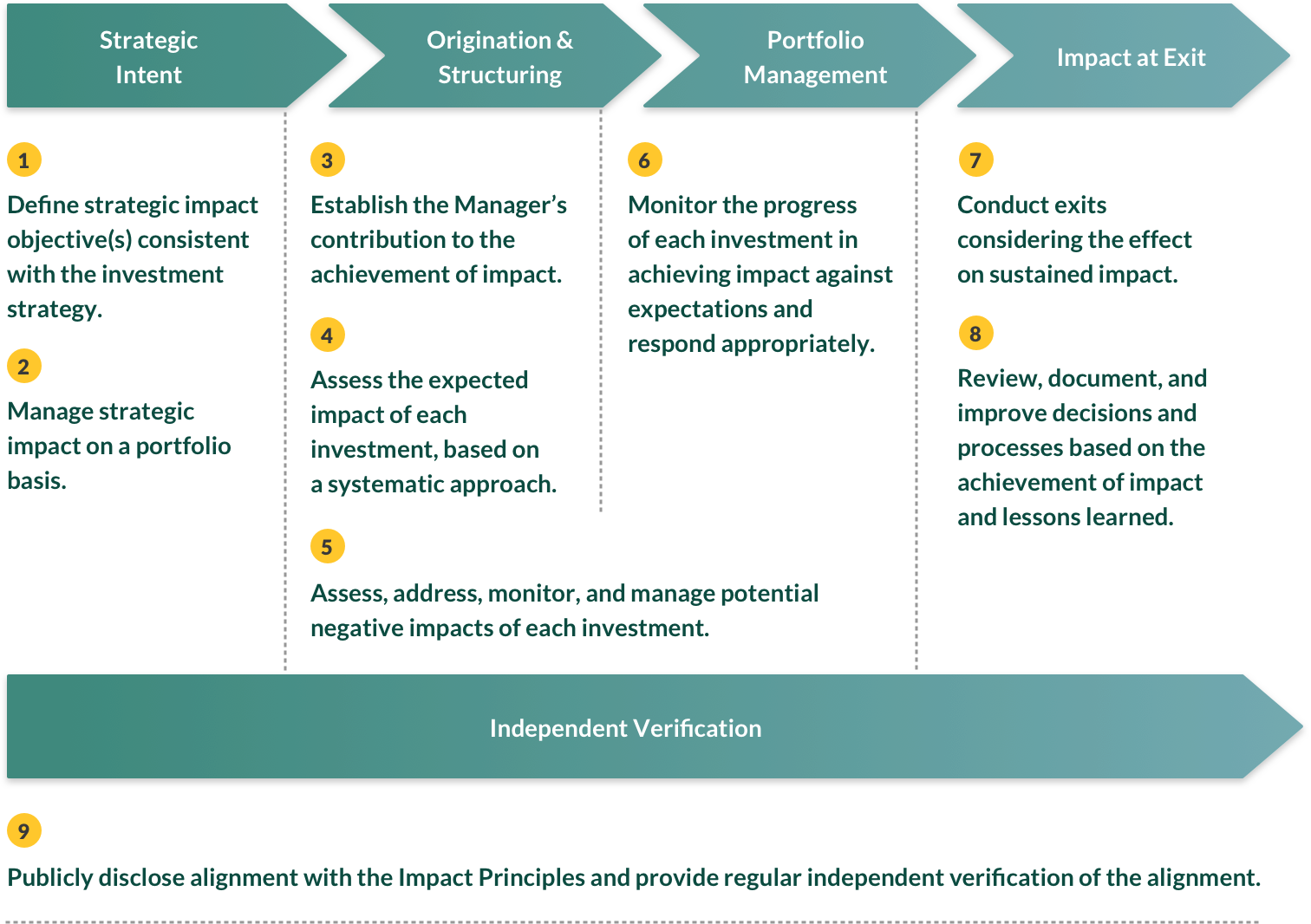THE 9 PRINCIPLES
The Impact Principles are a framework for investors for the design and implementation of their impact management systems, ensuring that impact considerations are integrated throughout the investment lifecycle. They may be implemented through different types of systems, each of which can be designed to fit the needs of an individual organization. They do not prescribe specific tools and approaches, or specific impact measurement frameworks. The expectation is that industry participants will continue to learn from each other as they implement the Impact Principles.
The Impact Principles are scalable and relevant to all types of impact investors and sizes of investment portfolios, asset types, sectors, and geographies. The Impact Principles may be adopted at the corporate, line of business, fund, or investment vehicle level. Asset managers with a diverse set of investment products may decide to adopt the Impact Principles for only specific funds or vehicles that they consider impact investments and need not adopt the Impact Principles for the entirety of their assets. As well, asset owners that invest in bonds, funds, and other investment vehicles may apply the Impact Principles to their own investment processes. The Impact Principles do not have to be followed by the investee company, fund, or asset.
The way in which the Impact Principles are applied will vary by type of investor. Asset owners and their advisors may use them to screen impact investment opportunities. Asset managers may use the Impact Principles to assure investors that impact funds are managed in a robust fashion.
With thanks to the architects of the Operating Principles for Impact Management:
Neil Gregory Diane Damskey Christian Rosenholm Ellen Carey Maginnis
Download full text of Impact Principles


